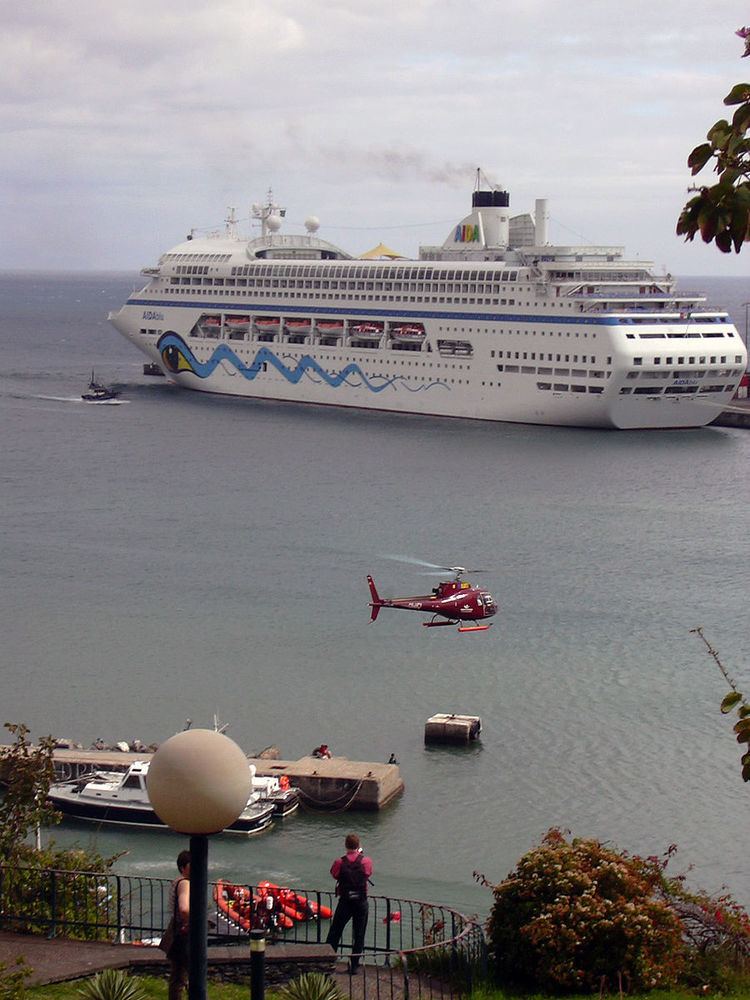 | ||
The Madeira islands and Funchal has an extensive public transportation system. Transport between the two main islands is done by plane or by ferries, the latter also allowing for the transportation of vehicles. Visiting the interior of the islands is now very easy, due to major road developments, known as the Vias rápidas, on the islands during Portugal's economic boom.
Contents
European Union citizens of the Schengen Treaty area can enter the islands freely, while those from other regions need identification.
Man powered transport
In the past Madeira had a mode of transport that no longer exists called a hammock litter. It was introduced by Robert Reid Kalley in the 19th century.
Air travel
The islands have two airports, one in Santa Cruz (known as Funchal Airport (FNC)) on the Island of Madeira and the other in the city of Vila Baleira on Porto Santo Island. Flights to the islands are mostly made from Lisbon and Porto, but there are also direct flights from other major European cities and other countries, like Brazil, Venezuela and South Africa.
The first seaplane to land in Madeira was Felixstowe F.3, captained Carlos Viegas Gago Coutinho by on 22 March 1921, Madeira then had regular Seaplane services from 1949 to 1958 which were operated by Aquila Airways, which had flights from Southampton, Jersey and Lisbon to Madeira. Winston Churchill used the service regularly. Captain Harry Frank Broadbent who flew as captain for Aquila Airways, then worked for ARTOP Linhas Aéreas as an instructor pilot, ARTOP took over the route in 1958, also operated seaplanes from Lisbon to Madeira.
On 9 November 1958, Captain Harry Frank Broadbent accompanied by co-pilot Thomas Rowell, four other crew and 30 passengers, piloted Martin PBM Mariner (CS-THB, named "Porto Santo") owned by ARTOP Linhas Aéreas, from Cabo Ruivo Seaplane Base near Lisbon, headed for Funchal, Madeira. About an hour into the flight, when it would have been over the Atlantic Ocean about 150 miles SW of Lisbon, a radio message code "QUG" was received, meaning "I am forced to land immediately". After several days of searching by air and sea by US and Portuguese authorities, no further trace was found of the aircraft or its crew or passengers.
Work began on Madeira airport from 1961 (which became operative in July 1964) was dreaded among airliner pilots for its runway, which was not only short (the largest planes that could be accommodated were the Airbus A320 and Boeing 737) but was also built on a high embankment which fell away abruptly towards the sea. It often experienced updrafts which tended to lift landing aircraft in an unpredictable fashion. In an accident on November 19, 1977 that killed over 150 people, TAP Portugal Flight 425, landing in unfavorable weather, overshot the runway and dropped off the cliff. Subsequently the runway was realigned and extended from 1,800m to 2,481m, enabling most modern passenger airplanes (including the Boeing 747-400) to visit the island.
Railways
In Funchal there are two aerial tramways, the Funchal Cable Car and a second aerial tramway, which went in service in 2005.
Previously there was a steam-powered cog railway (Monte Railway) from Funchal to Monte which operated between 1893 and 1943, and went further up to Terreiro da Luta at 867 m above sea level.
Land transport
Bus companies, including Horários do Funchal which has been operating for over one hundred years, have regularly scheduled routes to all points of interest on the island.
The Direcção Regional dos Transportes Terrestres is the department of the regional government responsible for land transportation in the autonomous region.
